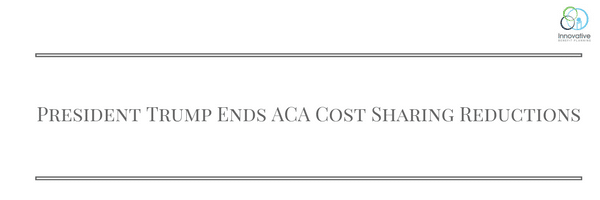President Trump Ends ACA Cost Sharing Reductions

On the evening of October 12, 2017, President Trump announced that cost sharing reductions for low income Americans in relation to the Patient Protection and Affordable Care Act (ACA) would be stopped. The Department of Health and Human Services (HHS) has confirmed that payments will be stopped immediately. It is anticipated at least some state attorneys general will file lawsuits to block the ending of the subsidy payments, with California Attorney General Xavier Becerra stating he is prepared to file a lawsuit to protect the subsidies.
Background
Individuals with household modified adjusted gross incomes (AGIs) in excess of 100 percent but not exceeding 400 percent of the federal poverty level (FPL) may be eligible for cost-sharing reductions for coverage purchased through health insurance exchanges if they meet a variety of criteria. Cost-sharing reductions are limited to coverage months for which the individual is allowed a premium tax credit. Eligibility for cost-sharing reductions is based on the tax year for which advanced eligibility determinations are made by HHS, rather than the tax year for which premium credits are allowed. In 2015, cost-sharing subsides reduced out-of-pocket (OOP) limits:
- Less than 100 percent but not exceeding 200 percent of FPL: OOP limits reduced by two-thirds
- Greater than 200 percent but not exceeding 300 percent of FPL: OOP limits reduced by one-half
- Greater than 300 percent but not exceeding 400 percent of FPL: OOP limits reduced by one-third
After 2015, the base percentages were shifted based on a percentage of average per capita health insurance premium increases. The cost-sharing reduction is paid directly to the insurer, and is automatically applied when eligible individuals enroll in a silver plan on the Marketplace or Exchange.
The cost-sharing reduction is not the same as the “advance premium tax credit” which is also available to individuals with household modified AGIs of at least 100 percent and not exceeding 400 percent of the FPL.
** Impact on Employers**
There is no direct impact to employers at this time, however employers with fully insured health plans might see group health plan rate increases in future years as insurance companies work to make up for the loss of revenue.
This information is general and is provided for educational purposes only. It is not intended to provide legal advice.
_You should not act on this information without consulting legal counsel or other knowledgeable advisors.
Categories
Archive








